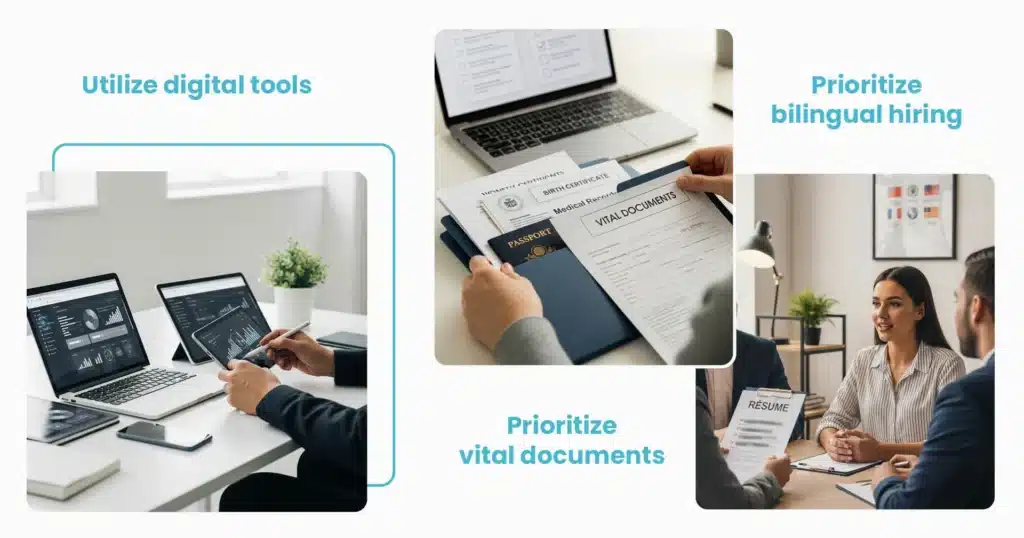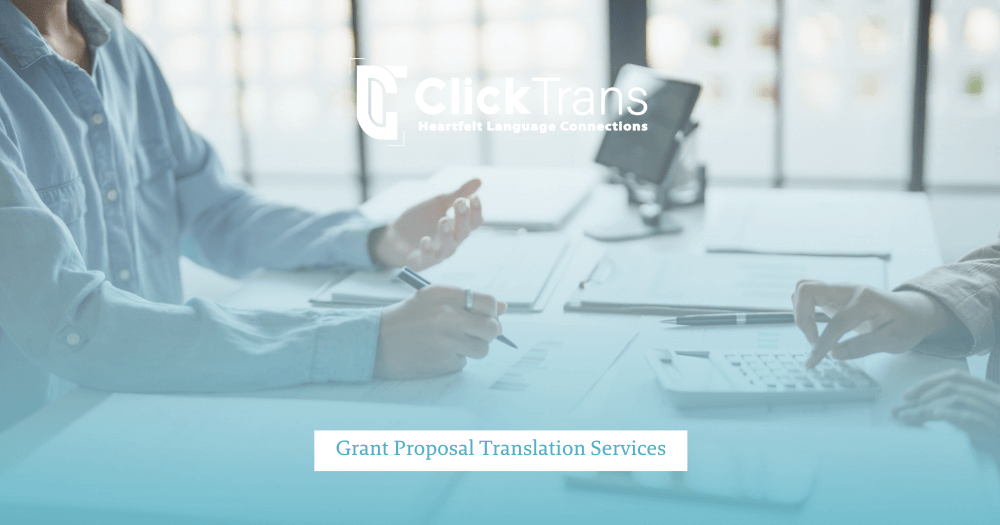Table of Contents
Imagine needing healthcare, education, or legal help but not understanding the language. This is the daily reality for millions of limited English proficient (LEP) individuals in the U.S. That’s where language access services and a clear Language Access Plan become essential.
While English is spoken by over 1.3 billion people, it’s still not accessible to everyone. Many face daily exclusion due to language barriers.
Understanding the 5 sections of a language access plan is key to building an inclusive strategy that ensures equal access to vital services for all.
Explore the 5 Sections of a Language Access Plan
Understanding and implementing a Language Access Plan isn’t just about compliance—it’s about inclusion. Each of the five core sections plays a vital role in removing language barriers and ensuring equitable access to essential services for all, especially limited English proficient (LEP) individuals.
1. Assessing Language Needs in the Target Community
To properly support LEP, we must first comprehend the community’s different language demands. Gathering this information allows organizations to adjust their language access plan to fit the specific requirements of their community, ensuring that language is never a barrier to accessing critical services. Here’s how your organization can take action.
– Linguistic analysis: Conduct comprehensive assessments, surveys, and consultations to determine the languages spoken and competence levels among the target demographic.
– Cultural background: Understand the cultural norms, mindsets, and values that shape language use in your society.
– Third-party assistance: Examine existing language support services such as interpreters, translation tools, and language learning materials to further enhance communication with diverse populations.
– Demographic research: Collect data from school reports and local health or government records, and identify populations with LEP.
Additionally, reviewing Language Access Laws by State can help organizations ensure their plans comply with regional legal requirements and adapt to specific obligations across different jurisdictions.
By identifying these key elements, organizations lay a strong foundation for inclusive communication. With this understanding in place, it’s time to move from planning to implementation.
2. Strategies for Providing Translation Services
Now that you know who needs your help, you need to understand that it’s not easy to learn a new language all of a sudden. It could be hard, frustrating, and even isolating. LEP individuals could feel unequal, alienated, and blocked by barriers, which is why providing translation and interpretation services is crucial in breaking down those barriers and promoting inclusivity. That’s why you also need to know how to effectively help them.
– Prioritize bilingual hiring: Use qualified, trained, and preferably certified professionals to ensure accuracy and cultural appropriateness.
– Prioritize vital documents: Translate medical records, legal forms, safety instructions, and educational materials to ensure access to important information in the native language.
– Utilize digital tools: Use translation apps as an option to assist with quick and basic translations, but they should not be relied upon for important or sensitive information.
3. Staff Training and Cultural Competency Development
No matter how much technology has advanced, nothing can replace face-to-face communication and understanding of cultural differences. Investing in staff training and cultural competency development can help bridge communication gaps and build trust with non-English-speaking individuals. Cultural understanding is equally vital as language proficiency.
4. Monitoring and Evaluating the Quality of Language Services
Now that we have established that LEP individuals need to have access to quality language services, it is important to monitor and evaluate the effectiveness of these services. This will ensure that they are actually receiving the help that they need. Organizations can do this by:
- Collecting feedback from LEP individuals through surveys or interviews.
- Tracking how often interpreters are used and which languages are most requested.
- Reviewing translated materials regularly to ensure accuracy and clarity.
Regular evaluation helps ensure the main sections in a language access policy are not only implemented but actually improving service access for LEP individuals.
For deeper insights and proven strategies, organizations can explore this guide by the Migration Policy Institute, which offers evidence-based approaches for measuring the impact of language services across public agencies and service providers.
5. Communication and Documentation for Sustainability
In order for your Language Access Plan (LAP) to work and be effective over time, you need strong communication and good record-keeping. Clear documentation and communication form the backbone of any effective language access plan structure.
This includes several essential components, such as
– A written plan: Explain your regulations and processes and who is responsible.
– Clear communication steps: Make sure all staff know when and how to use language services.
– A simple reporting system: Keep track of when and what language services are used, any issues that come up, and staff or client feedback. Use this to identify potential areas for improvement.
Smart Tips Based on the 5 sections of a language access plan
Listen to the community: Co-create it with LEP individuals, community leaders, and frontline staff to ensure that the plan is based on lived experience.
Make language services visible: Promote language services clearly in ads, websites, forms, and social media if available so people know help is available.
Train beyond the basics: Include scenario-based training that prepares staff for real situations, not just theoretical ones.
Monitor what matters: Track everything, and most importantly, track outcomes, such as whether people get services faster or feel more respected.
Hire with compassion: Look for more than just language fluency when building a language-accessible team. Prioritize candidates who show empathy, patience, cultural sensitivity, and a genuine commitment to inclusion.
Looking for accurate, certified, and fast translations?
Contact us today and request a free quote.
Conclusion
Supporting LEP individuals can sound like a challenging task, but with proper training and resources, staff can effectively provide language access and create a more inclusive environment for all individuals. However, helping others who are in need is rewarding when they are efficiently able to communicate and access services in their preferred language. Organizations need to have empathy and professionalism towards minorities and inclusivity. Additionally, Understanding the key parts of a language access plan can be beneficial to your business too, as it can lead to increased customer satisfaction and loyalty, ultimately improving your organization’s reputation and success in the long run. Finally, language should never be a barrier; it should be a bridge that connects people from different linguistic backgrounds.
With ClickTrans, we break the language barrier, offering simple yet effective solutions to ensure communication between businesses and their customers, regardless of language differences. Our platform provides translation solutions that help businesses create a more inclusive and welcoming environment for all individuals. Let’s work together now!
Frequently Asked Questions
Why should my organization have a Language Access Plan (LAP)?
Because language barriers prevent people from getting the help they need. A strong LAP ensures fair accessibility, better communication, and builds trust with non-English speakers.
How do I know what languages to support in my plan?
Start by collecting data, looking at school, health, and government records, conducting surveys, and consulting the local community to identify which languages are most spoken and where support is needed.
Are free translation apps enough for serving LEP clients?
Not for important or sensitive content. Apps are okay for quick, informal use, but legal, medical, or emotional conversations need professional human support for accuracy and empathy.
What should staff be trained on to support language access?
They should know when and how to access interpreters, recognize language needs early, and understand cultural differences to better serve and connect with LEP individuals.







